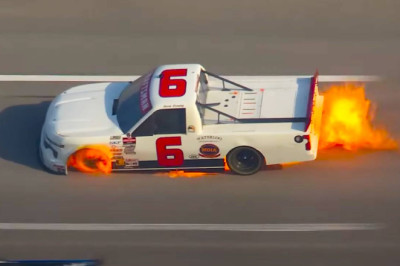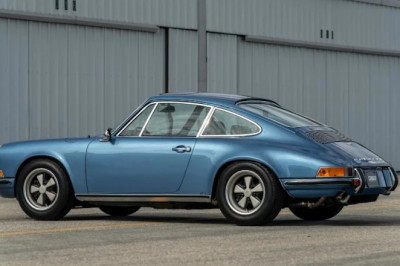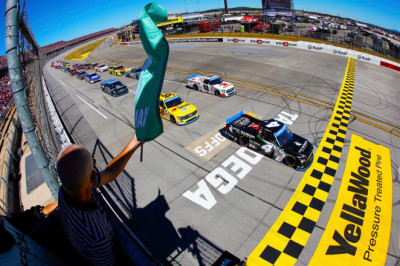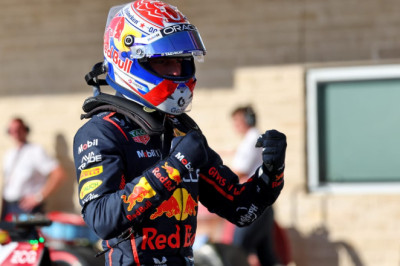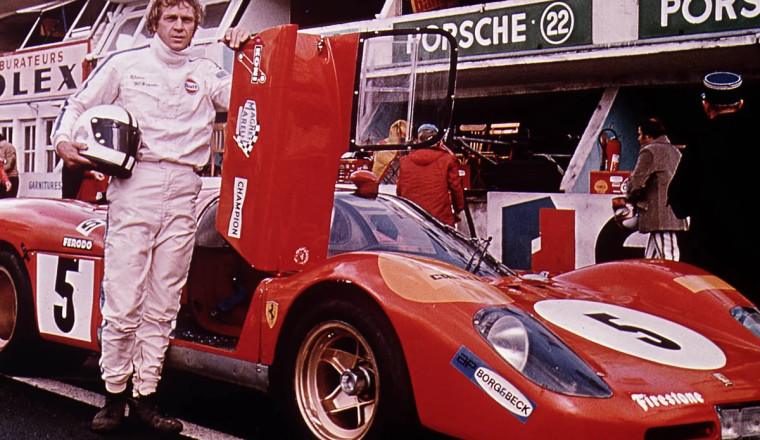
The Making of a Passion Project
By the mid-1960s, McQueen could have coasted on his Hollywood superstardom alone. But racing called to him on a nearly cellular level. When Warner Brothers and James Garner fast-tracked the racing epic Grand Prix, even considering McQueen for the lead, it stoked his competitive fire. McQueen quietly vowed to do it better—to capture the grit, danger, and addictive pull of motorsport in a way no one had dared before.
By 1970, Steve McQueen was finally free to chase his racing dream—and he didn’t do things by halves. Le Mans wasn’t just a film for him. It was a mission. With $7.5 million in the bank for production and another $2 million set aside for marketing, McQueen and Solar Productions bulldozed their way to Le Mans, France, intent on bottling lightning.
When Celluloid and Asphalt Collide
McQueen’s devotion to authenticity bordered on obsession. He wasn’t content to act like a racer—he was a racer. Months before Le Mans, he finished second at the grueling Sebring 12 Hours, and he did it with a broken foot. He wanted Le Mans to look and feel real, so he embedded himself and his cameras deeply into the actual 24-hour race. The team’s Porsche 908 wasn’t just a prop; it was a competitor, rigged with custom cameras capturing raw moments as the Mulsanne Straight blurred past at unthinkable speeds.
For McQueen and his crew, reality took precedence over convenience. If that meant shooting for hours under the French sun, or re-enacting hair-raising near-misses well after the race had ended, then so be it. Spectators were called back weeks later to fill the grandstands, drivers recreated wheel-to-wheel battles, and mechanics fussed over million-dollar machines as though victory were still at stake. In pursuit of racing’s truth, nothing was too much.
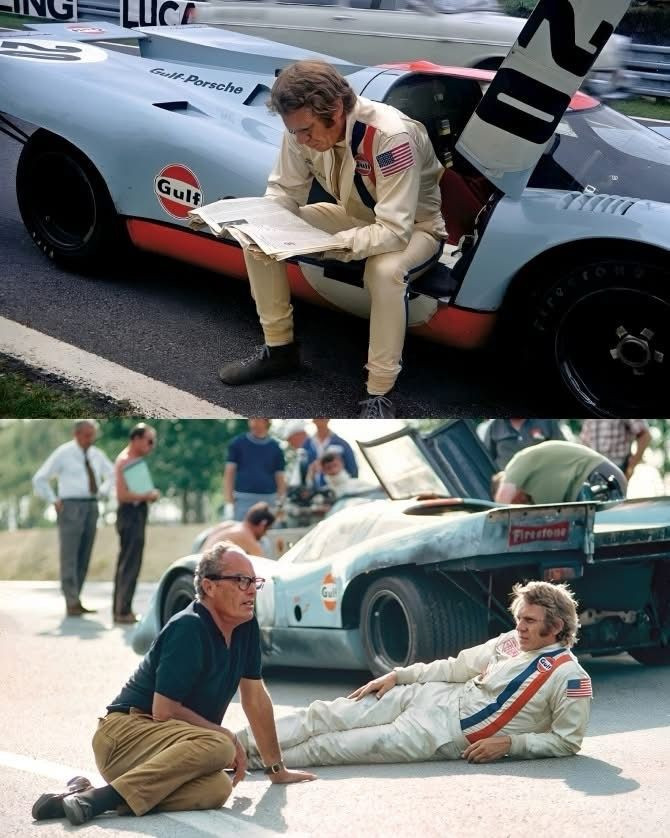
Turmoil Off the Track
McQueen’s search for authenticity made the production as tumultuous as the 24 Hours of Le Mans itself. Directors came and went. The original, John Sturges, walked out, reportedly frustrated with the lack of a script and creative direction. His replacement, Lee H. Katzin, inherited a set pulsing with artistic friction. Real-life racers like Derek Bell and David Piper paid a heavy price for realism—Piper lost part of his leg in a camera car crash. Everyone, from the cast to the crew, bore witness to the razor-thin line between movie magic and mortal risk.
Through all the chaos, McQueen’s love for racing never wavered. Acting had made him famous, but racing made him feel alive—no amount of Hollywood glamour equaled the adrenaline surge of flirting with disaster at Le Mans.
McQueen: Built for Speed
Steve McQueen’s car collection was less a hobby and more a living biography. In his garage, you’d find Le Mans-winning prototypes alongside motorcycles dusted with Baja dirt. Each exemplified an authentic love for speed, machinery, and the unique fraternity of those who lived their lives a gear higher than the rest. It was said that McQueen felt most at home in a helmet, fingers oily, senses tuned to the rev counter, the racetrack echoing every heartbeat.
His status brought cachet, but it was his credibility that mattered to the racing community. He could swap stories over coffee with F1 legends one day and tear up the backroads on his beloved Triumph the next. For McQueen, cars weren’t trophies; they were extensions of his soul.
The Legacy of Le Mans
Le Mans didn’t set the box office on fire, nor did it sweep the awards ceremonies. But five decades on, its currency is cultural, not commercial. For racing fans and movie lovers, it’s a tenacious, visceral document—a film that puts you in the cockpit, with the rumble of V12s and the scent of high-octane fuel close enough to touch.
Steve McQueen’s masterpiece doesn’t just show you what racing looks like; it lets you feel why it matters. In every frame, you glimpse the man behind the Hollywood veneer—a driven, complicated, endlessly restless soul with gasoline running through his veins. Le Mans remains his love letter to the sport and to anyone who’s ever chased a dream at full throttle.






